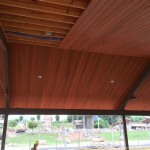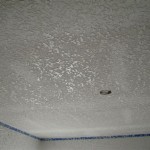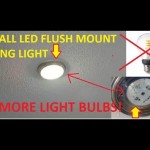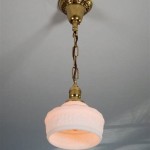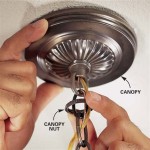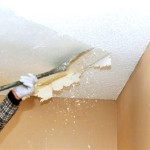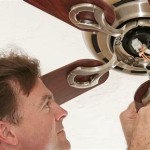How To Make A Vaulted Ceiling Look Better
Vaulted ceilings, known for their dramatic height and ability to create a sense of spaciousness, can significantly enhance the aesthetic appeal of a room. However, a poorly designed or maintained vaulted ceiling can detract from the overall interior design. This article explores various strategies to optimize the appearance of a vaulted ceiling, focusing on effective painting techniques, appropriate lighting solutions, and the strategic use of architectural elements.
Painting Techniques for Vaulted Ceilings
The color and finish of a vaulted ceiling play a crucial role in determining the ambiance of the room. Careful consideration should be given to the selection and application of paint to maximize the visual impact of the ceiling.
Color Selection: The choice of color significantly influences the perceived height and size of the room. Lighter colors, such as white, off-white, and pale shades of gray or blue, tend to reflect more light, making the ceiling appear higher and the room feel more expansive. Conversely, darker colors can make the ceiling feel lower and create a more intimate atmosphere. However, employing dark colors on a vaulted ceiling can also highlight architectural details and create a sense of drama, particularly in larger spaces.
The color used for the walls should also be considered in relation to the ceiling color. A monochromatic color scheme, where the walls and ceiling are painted in different shades of the same color, can create a cohesive and harmonious look. Alternatively, a contrasting color scheme can be used to highlight the architectural features of the vaulted ceiling. For instance, pairing bright white walls with a subtly contrasting ceiling color, such as a light gray or beige, can add visual interest without overwhelming the space.
Paint Finish: The finish of the paint also impacts the appearance of the vaulted ceiling. Matte finishes are typically recommended for ceilings as they help to minimize imperfections and reduce glare. A matte finish absorbs light, creating a softer and more uniform appearance. However, in areas with high humidity or potential for moisture, a satin or eggshell finish may be more appropriate as they are more resistant to mildew and easier to clean. These finishes also reflect slightly more light, which can be beneficial in rooms with limited natural light. The choice between matte and satin/eggshell often requires balancing aesthetic preferences with practical considerations related to room usage and environmental conditions.
Application Techniques: Proper paint application is essential for achieving a professional-looking finish on a vaulted ceiling. This often requires specialized tools and techniques, given the height and angles involved. Using a long-handled roller is crucial for reaching the highest points of the ceiling safely and efficiently. A high-quality roller cover will ensure even paint distribution and minimize streaks. It is also advisable to use a paint sprayer for larger vaulted ceilings as it can provide a more uniform and consistent finish than a roller, especially on textured surfaces. Before painting, the ceiling should be thoroughly cleaned to remove dust, dirt, and cobwebs. Any cracks or imperfections should be repaired and primed to ensure proper adhesion of the paint. Applying multiple thin coats of paint is generally preferable to applying a single thick coat, as this reduces the risk of drips and ensures better coverage.
Lighting Strategies for Vaulted Ceilings
Effective lighting is paramount for accentuating the architectural features of a vaulted ceiling and creating the desired ambiance in the room. The type, placement, and intensity of lighting fixtures should be carefully considered to optimize the visual impact of the ceiling.
Types of Lighting Fixtures: Several types of lighting fixtures are well-suited for vaulted ceilings, each offering distinct advantages. Recessed lighting is a popular choice as it provides even illumination and minimizes visual clutter. Recessed lights can be strategically placed to highlight specific architectural features or artwork. Pendant lights, which hang down from the ceiling, can add a decorative element to the room and provide focused lighting over specific areas, such as a dining table or kitchen island. Chandeliers are an opulent option that can create a dramatic focal point in a grand space. Track lighting offers flexibility in directing light to different areas of the room and is particularly useful for highlighting artwork or architectural details. Wall sconces can also be used to provide ambient lighting and create visual interest on the walls, complementing the vaulted ceiling. The choice of lighting fixtures should be based on the style of the room, the desired level of illumination, and the architectural features that are to be emphasized.
Placement and Direction of Light: The placement and direction of light fixtures are critical for achieving the desired effect. Uplighting, where lights are directed upwards towards the ceiling, can enhance the sense of height and create a soft, ambient glow. This can be achieved through the use of wall sconces or strategically placed spotlights. Downlighting, where lights are directed downwards, provides focused illumination for specific tasks or areas. Recessed lighting and pendant lights are commonly used for downlighting. Accent lighting, which is used to highlight specific features, such as artwork or architectural details, can be achieved through the use of track lighting or spotlights. It is important to avoid placing lights directly in the line of sight, as this can create glare and discomfort. Dimmers can be installed to control the intensity of the lighting and create different moods. Experimenting with different lighting configurations is often necessary to achieve the optimal balance of illumination and visual appeal.
Considerations for Natural Light: Natural light can significantly enhance the beauty of a vaulted ceiling. Incorporating skylights or large windows into the design can bring natural light into the room, creating a bright and airy atmosphere. Skylights can be particularly effective in maximizing natural light in rooms with limited window space. However, it is important to consider the orientation of the windows and skylights to avoid excessive glare or heat gain. Window treatments, such as blinds or shades, can be used to control the amount of natural light entering the room. Properly managed natural light can enhance the colors and textures of the ceiling and walls, creating a more inviting and visually appealing space.
Architectural Enhancements for Vaulted Ceilings
In addition to painting and lighting, various architectural elements can be incorporated to enhance the visual appeal of a vaulted ceiling and create a more distinctive design.
Beams and Trim: Adding beams to a vaulted ceiling can create a sense of depth and visual interest. Beams can be made of wood, metal, or even faux wood, depending on the desired aesthetic. They can be arranged in a variety of patterns, such as parallel rows, intersecting patterns, or radial designs. The color and texture of the beams should complement the overall style of the room. Trim, such as crown molding or decorative cornices, can also be used to enhance the architectural details of the ceiling. Trim can be painted to match the ceiling or walls, or it can be stained or finished to create a contrasting effect. The addition of beams and trim can significantly enhance the character and sophistication of a vaulted ceiling.
Textured Surfaces: Applying texture to a vaulted ceiling can add visual interest and dimension. Textured finishes, such as popcorn ceilings or textured paint, can help to conceal imperfections and create a more tactile feel. However, it is important to consider the overall style of the room when choosing a textured finish. Heavily textured ceilings can look dated or overwhelming in modern spaces. Smooth or lightly textured finishes are generally more versatile and can be adapted to a variety of styles. Texture can also be achieved through the use of decorative plaster or stucco, which can create intricate patterns and add a sense of artistry to the ceiling.
Architectural Details: Incorporating unique architectural details can transform a vaulted ceiling into a stunning focal point. Arches, curves, and other geometric shapes can be used to create a more dynamic and visually appealing design. Niches or alcoves can be built into the ceiling to display artwork or decorative objects. Coffered ceilings, which feature a series of recessed panels, can add a sense of grandeur and sophistication to a room. The integration of architectural details should be carefully planned to ensure that they complement the overall style of the room and enhance the architectural integrity of the building. Professional architectural design services can be invaluable in developing innovative and aesthetically pleasing solutions for vaulted ceilings.

13 Unbeatable Vaulted Ceiling Ideas 2025 Checkatrade

Vaulted Ceiling Design Ceilings Armstrong Residential

10 Ways To Make A High Ceilinged Room Look Cozier

The Ultimate Guide To Vaulted Ceilings Pros Cons And Inspiration

22 Vaulted Ceiling Ideas For An Open And Inviting Home Alittledelightful

13 Unbeatable Vaulted Ceiling Ideas 2025 Checkatrade

10 Ways To Make A High Ceilinged Room Look Cozier

21 Vaulted Ceiling Ideas Highlight Contemporary Design Trends

Vaulted Ceiling Ideas For Updated Elegant Striking Drama Décor Aid

22 Vaulted Ceiling Ideas For An Open And Inviting Home Alittledelightful
Related Posts

